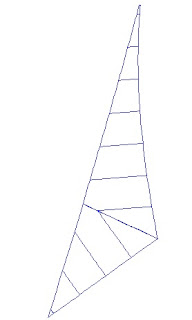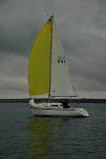Making a Caravel Sail

A few years back we began to hear of a ship being built down Warrnambool way inspired by the famous mysterious "Mahogany Ship". It turned out to be an authentic Caravel crafted by Graeme and Felicite Wylie. Having a strong and passionate interest in maritime history fuelled by family The sail took up our entire small loft association I was very excited to be approached to make the sails for the "Notorious" as the vessel was to be known. The original set we made from standard 8oz cruise Dacron and they did years and miles of service. Interesting the UV breakdown seemed to be retarded by Graeme painting the pristine white sails in a deep tan colour. We followed the voyages of the "Notorious" with interest and admired the vessel when




